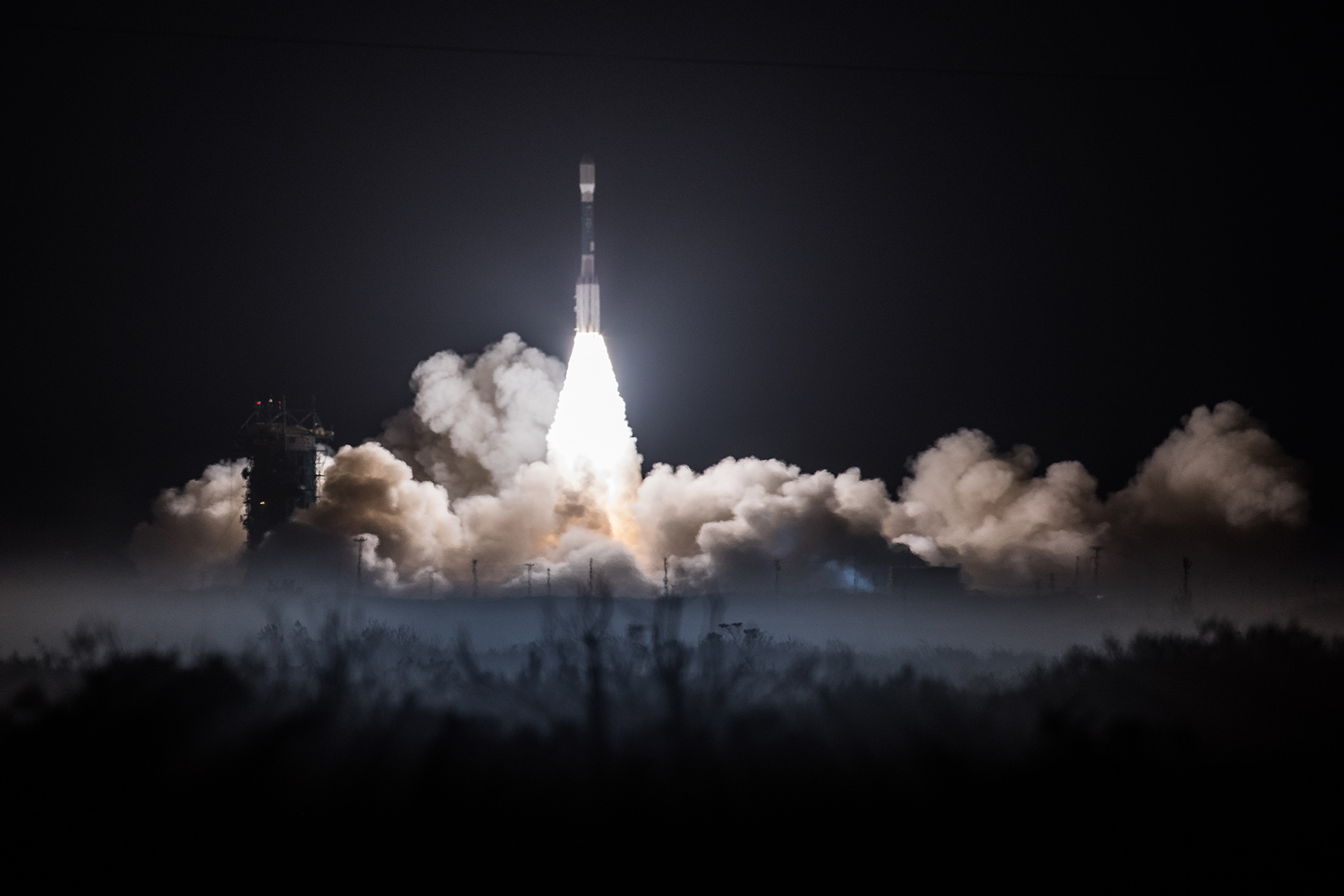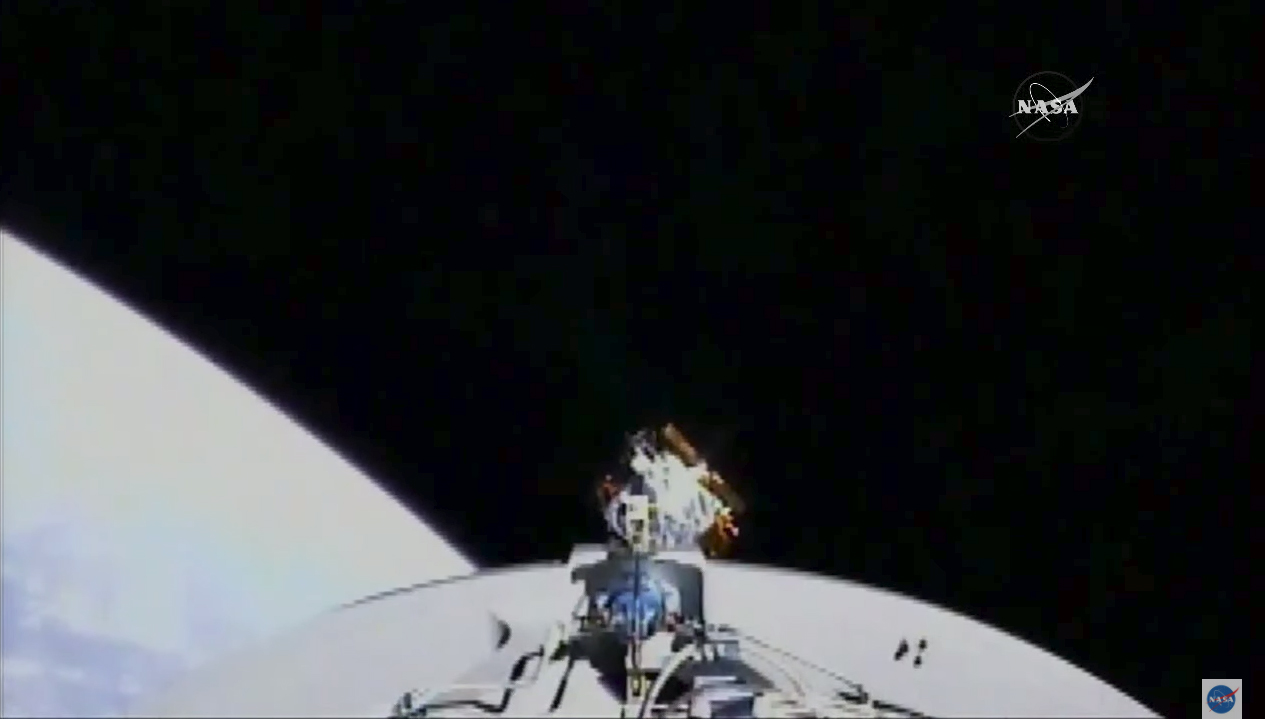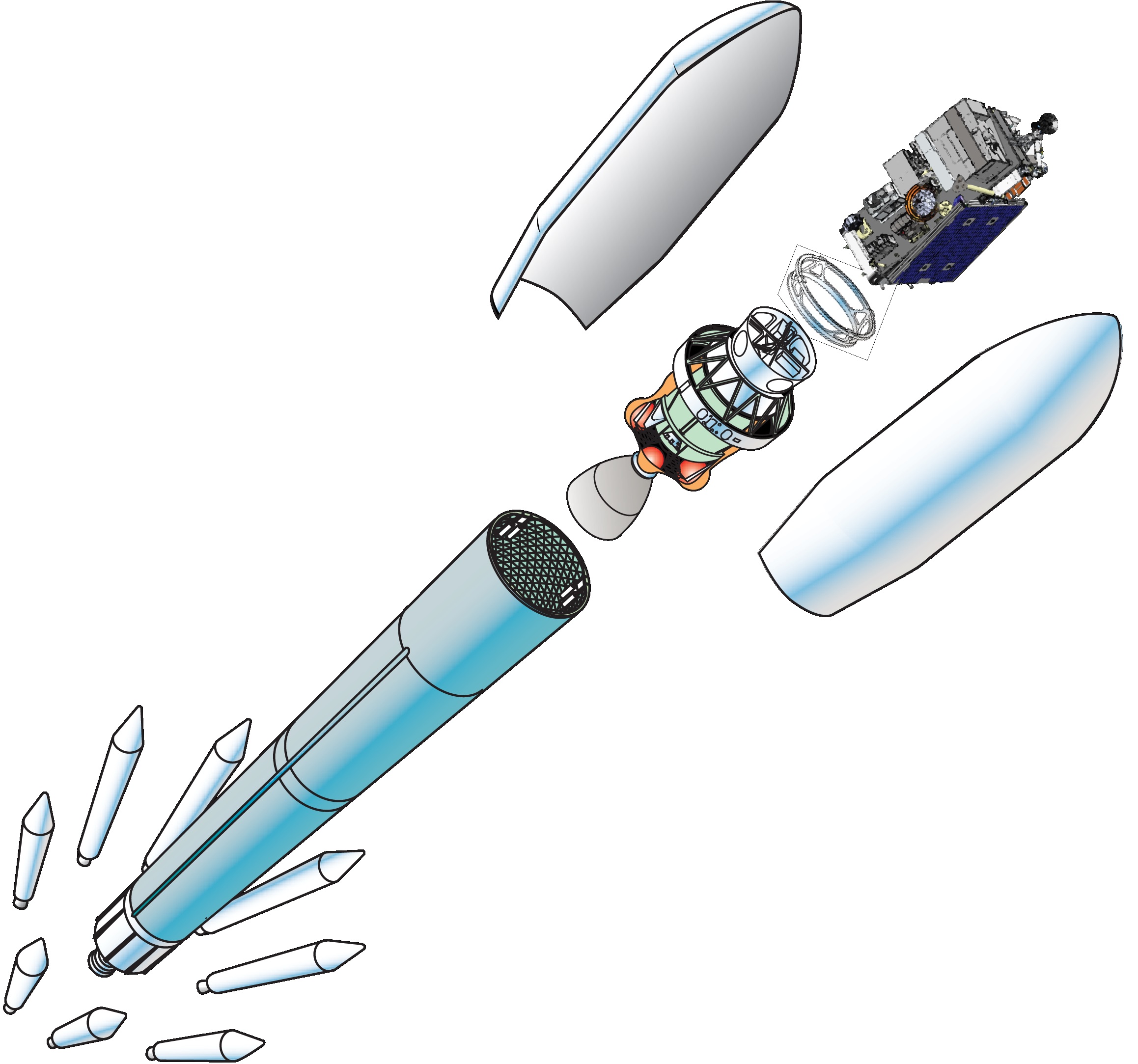First-of-Its-Kind Satellite Launches to Track Earth's Weather Like Never Before
The first in a series of four advanced polar-orbiting satellites launched to space on its third try early Saturday (Nov. 18), turning its watchful eye to improving the accuracy of weather forecasts and Earth observations.
The new Joint Polar Satellite System-1 satellite, or JPSS-1, launched into orbit atop a United Launch Alliance-built Delta II rocket at 4:47 a.m. EST (0947 GMT), lighting up the predawn sky over its Vandenberg Air Force Base in California. The successful liftoff came after two scrubbed launch attempts earlier this week due to high winds and boats inside the launch range restriction zone offshore.
"Things went absolutely perfect today," NASA launch manager Omar Baez said after the JPSS-1 launch. "The nation's got another wonderful weather asset up in space." [The JPSS-1 Weather Satellite's Mission in Pictures]
The National Oceanic and Atmospheric Administration (NOAA), in partnership with NASA, operates both geostationary satellites, like GOES-16, which stay in a fixed spot over Earth as they orbit, as well as polar-orbiting satellites, like Suomi NPP, which launched in 2011. Suomi NPP was originally intended to test the technology in store for JPSS-1, officials said at a news conference Sunday (Nov. 12), but it has become a valuable weather and Earth analysis satellite.

"This is huge," Greg Mandt, director of the JPSS program, said during live commentary just after the dazzling liftoff of JPSS-1. "JPSS 1 is part of a national polar orbiting weather satellite program, and we really need this because 85 percent of all the date from our weather forecast models come from this series of weather satellite.We're looking forward to getting good data from this satellite."
JPSS-1 will follow in Suomi NPP's path — literally — by chasing its precursor around in the same polar orbit, boasting "instruments so precise that they can measure the temperature to better than a tenth of a degree from the surface of the Earth all the way to the edge of space," Mandt said during the Nov. 12 news conference. The spacecraft will pass around the globe every 90 minutes.
The 14.8-foot (4.5 meters), 5,060-lb. (2,295 kilograms) spacecraft's five instruments will let it observe Earth and its climate over the long term while also pinpointing immediate weather changes. The satellite's full mission cost, including development and the whole life of the mission, is $1.6 billion.
Get the Space.com Newsletter
Breaking space news, the latest updates on rocket launches, skywatching events and more!
"With such an active and extremely dangerous hurricane season we've recently encountered — and the destructive wildfires we've seen around the planet, and particularly in California in the last year — JPSS-1 is arriving at just the right time," Steve Volz, director of NOAA's Satellite and Information Service, said during the news conference.

The JPSS-1 liftoff marks the second-to-last launch for Delta II rockets, which debuted in 1989 and have been responsible for 50 NASA launches, carrying a long list of satellites and Mars missions to space, officials said at the news conference. The final satellite to be launched on a Delta II rocket would be ICESat-2, which is currently set to launch in 2018.
Just under an hour after launch, JPSS-1 was released from the rocket's second stage, and the stage performed an extra engine burn to move out of the way and prepare to release the rocket's other passengers: five miniature satellites called cubesats, which will examine 3D printing of polymers in space, as well as a miniaturized weather-measurement system, which will study how components and computation are impacted by space radiation and more. All five of the small satellite travelers were successfully deployed by 85 minutes after launch. [Hurricane Watch: How Satellites Track Huge Storms from Space]
JPSS-1 itself, which will be renamed NOAA-20 once it's declared operational in orbit, will use its instruments to measure atmospheric temperature, moisture, ozone levels, vegetation and rainfall across the globe. (Read in more detail about JPSS-1's five instruments here.)
"All of these instruments can work in tandem," Mandt said at the news conference. "For example, the VIIRS [Visible, Infrared Imaging Radiometer Suite] can tell us the location of a fire and track the smoke plumes, while the CrIS [Cross-track Infrared Sounder] can measure carbon monoxide and methane from the fire, allowing us to see where air quality might be affected."
And in its turn, JPSS-1 will work with Suomi NPP and other weather satellites — plus JPSS-2 through 4, when they eventually launch — to provide an uninterrupted picture of Earth's weather and climate conditions.

"NOAA's mission as an operational agency is to be the trusted deliverer of Earth observations without interruption," Volz said at the news conference. "Many of the national infrastructure elements, the weather forecasts, all of the users in the nation rely on knowing the weather forecast will be there every day, every six hours, without interruption."
With JPSS-1 joining Suomi NPP in orbit, the system will no longer have a single point of failure — whether from a collision with orbital debris or a power failure that could give NOAA a forecasting blind spot.
"We have a young, fresh J1, as the aging and mature Suomi-NPP can continue to operate, so that we now are getting ready for J2," which will someday be the new-arrival satellite to the older JPSS-1, he added. "We want to have that cadence set up."
Email Sarah Lewin at slewin@space.com or follow her @SarahExplains. Follow us @Spacedotcom, Facebook and Google+. Original article on Space.com.
Join our Space Forums to keep talking space on the latest missions, night sky and more! And if you have a news tip, correction or comment, let us know at: community@space.com.

Sarah Lewin started writing for Space.com in June of 2015 as a Staff Writer and became Associate Editor in 2019 . Her work has been featured by Scientific American, IEEE Spectrum, Quanta Magazine, Wired, The Scientist, Science Friday and WGBH's Inside NOVA. Sarah has an MA from NYU's Science, Health and Environmental Reporting Program and an AB in mathematics from Brown University. When not writing, reading or thinking about space, Sarah enjoys musical theatre and mathematical papercraft. She is currently Assistant News Editor at Scientific American. You can follow her on Twitter @SarahExplains.









